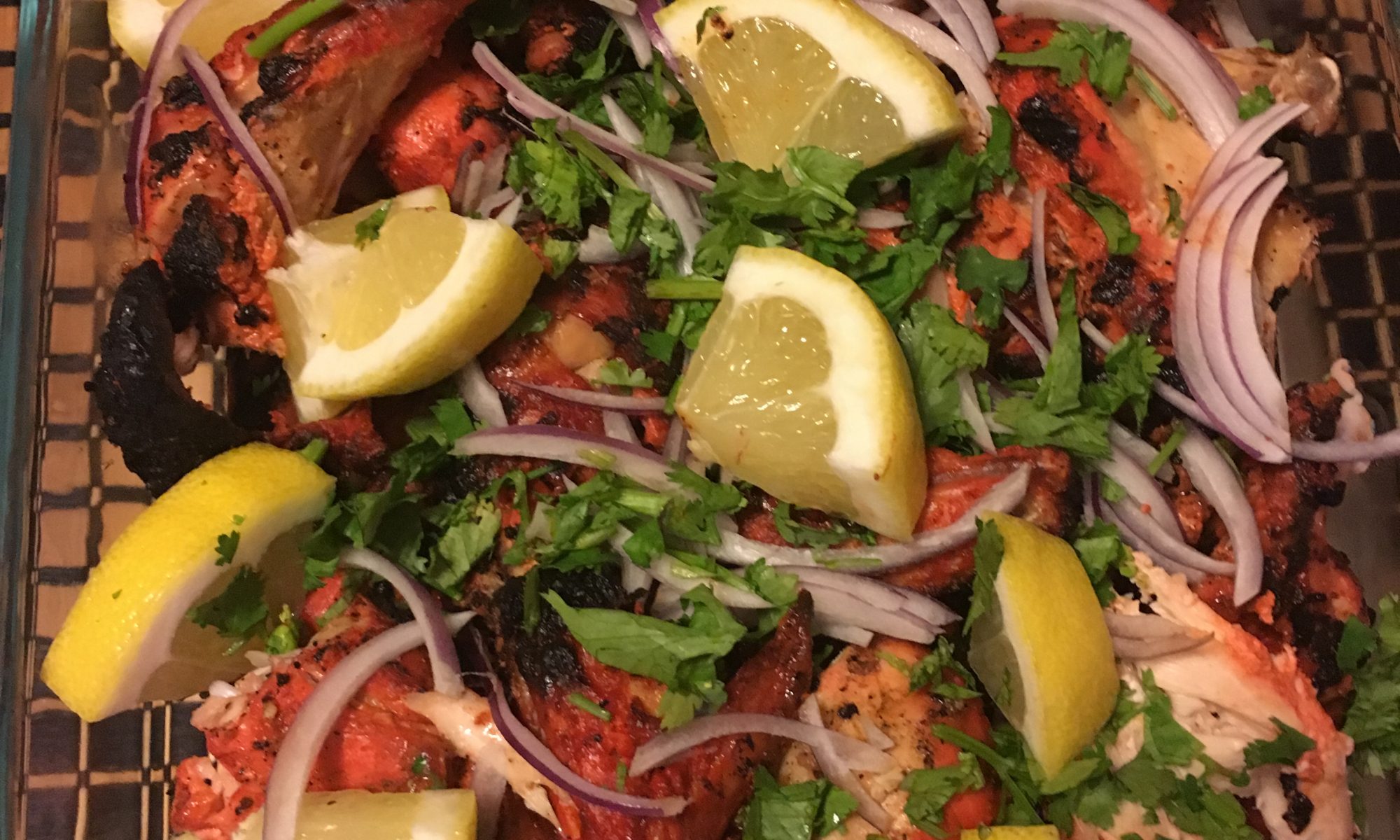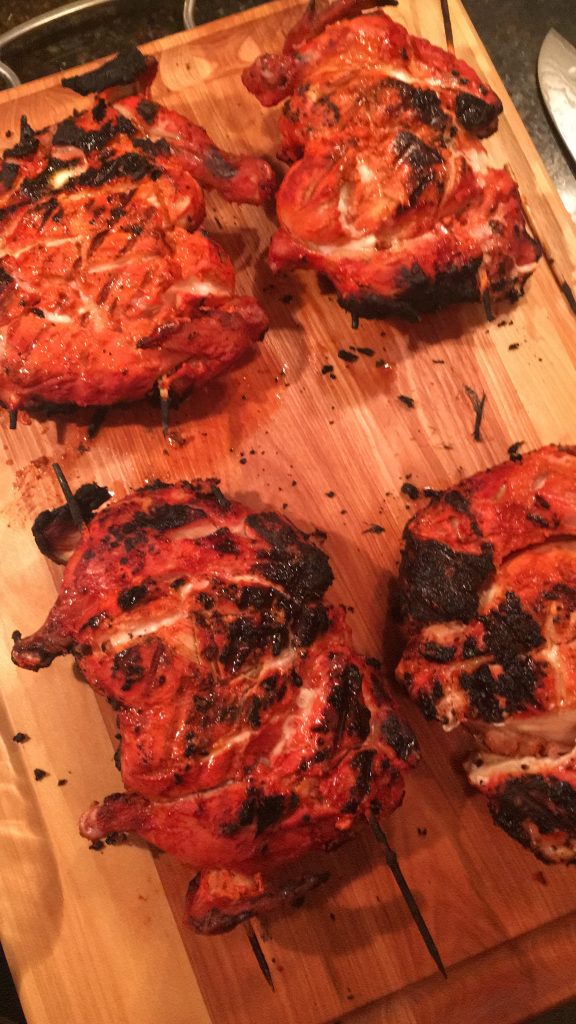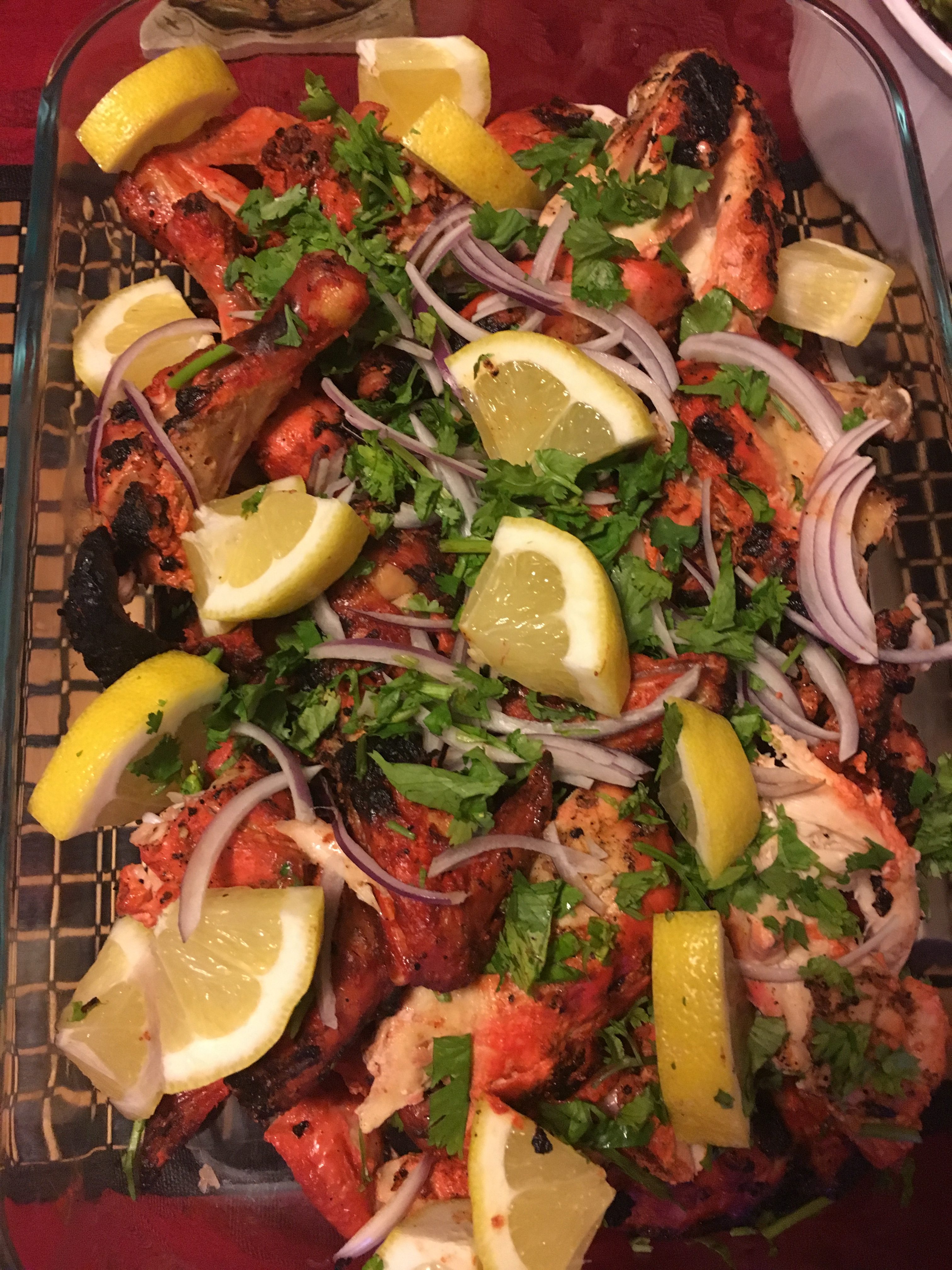Recipe from J. Kenji Lopéz-Alt at Serious Eats – The Food Lab
Notes
The moment that Red theme was drawn my gut instinct was to make Tandoori Chicken. When it was determined that Red theme night would be held at our place, I went straight to the Serious Eats site figuring that they may have a recommendation as to how to make the dish without owning a Tandoor oven.
Serious Eats noted that the special feature of the oven is that it can get to 900°F which you can achieve at home using a conventional charcoal grill. I used these Weber Char Baskets to bundle the coals just an inch or so under my grill to get it the hottest possible temperature. I was very happy with the results, and the marinate seemed to be spot-on to replicate this dish.
The spice blend calls for toasted ground cumin, toasted paprika, and toasted ground coriander seed. We toasted these ourselves in a shallow frying pan until the oils were released and then allowed them to cool.
Ingredients
-
- 4 Cornish game hens, about 1½-pounds each
- 2 tablespoons toasted ground cumin
- 2 tablespoons toasted paprika
- 1 tablespoon toasted ground coriander seed
- 1 teaspoon ground turmeric
- ½ teaspoon cayenne pepper
- 1 tablespoon achiote or a few drops red food coloring (optional)
- 8 cloves garlic, grated on a microplane grater
- 2 tablespoons fresh ginger, grated on a microplane grater
- 2 cups yogurt
- ½ cup lemon juice
- ¼ cup kosher salt
- Thinly sliced raw onion
- ½ cup roughly chopped cilantro leaves
- 2 lemons or limes, cut into wedges
Directions
-
Toast the ground cumin, paprika, and ground coriander seeds in a shallow frying pan until the oils are released. Move to a bowl and allow to cool.
- Peel skin off of hens, then using a sharp knife– Tandoori chicken is traditionally cooked with the skin off. While for most methods of cooking chicken this would be a bad idea (skin is an insulator that prevents dry breast meat from becoming tough or stringy), with tandoori chicken, the thick yogurt-based marinade helps to prevent the meat from drying out.
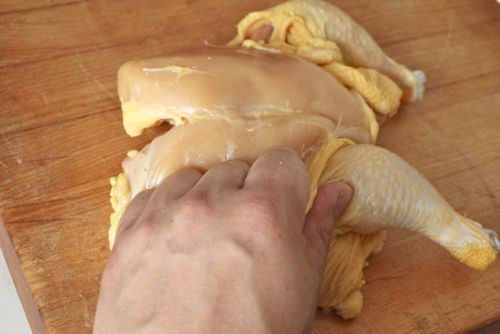
- Make deep incisions at 1-inch intervals all over the flesh. By slashing it with a sharp knife at regular intervals along its surface (make sure to slash against the grain), you greatly increase the area in which the marinade can flavor it.
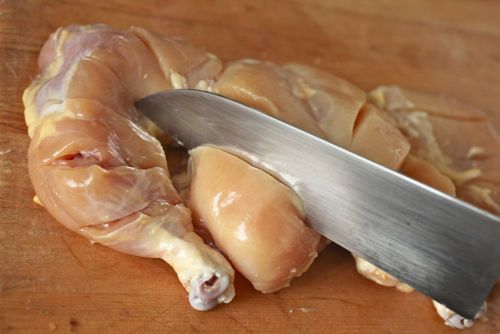
- Arrange legs so that they are pointing up towards the top of the breast. Use two long metal or wooden skewers (don’t expect them not to burn in the high heat needed for this type of cooking) to secure legs and breasts in place. Place in a large rimmed baking dish.
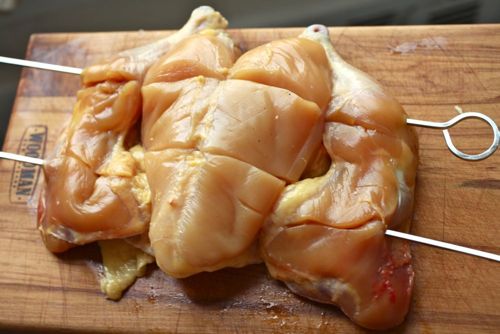
- Combine cumin, paprika, coriander, turmeric, cayenne, achiote or red food coloring, garlic, ginger, yogurt, lemon juice, and salt in a large bowl and whisk to combine. Pour marinade all over Cornish hens, using hands to coat every surface. cover loosely and refrigerate. Refrigerate and allow to marinate for at least 4 hours and up to 8, turning occasionally.
- Ignite a large chimney starter full of charcoal and allow to burn until all coals are ignited. Spread coals evenly under one side of grill (or use char baskets) and set grill grate in place. Cover and allow to preheat for 5 minutes. Brush grill grates clean.
- Wipe excess marinade off of hens then place meaty-side down directly over the coals. Cover partially and allow to cook until deeply charred on first side, 7 to 10 minutes. Flip and continue cooking until hens register 145°F in the thickest part of the breast and 165 to 170°F in the legs, about 5 minutes longer (for larger chickens, transfer to cooler side of grill, cover, and continue cooking until desired temperature is reached). I use a wireless dual-probe thermometer for cooking on the grill– I put one probe in the largest breast, one in the largest thigh, and set my receiver to the appropriate temperatures.
- Remove hens to a large cutting board, tent loosely with foil, and allow to rest for five minutes. Remove skewers and using a heavy knife or cleaver, chop each hen into 8 serving-sized pieces. Serve immediately with onions, cilantro, and lemon wedges.

